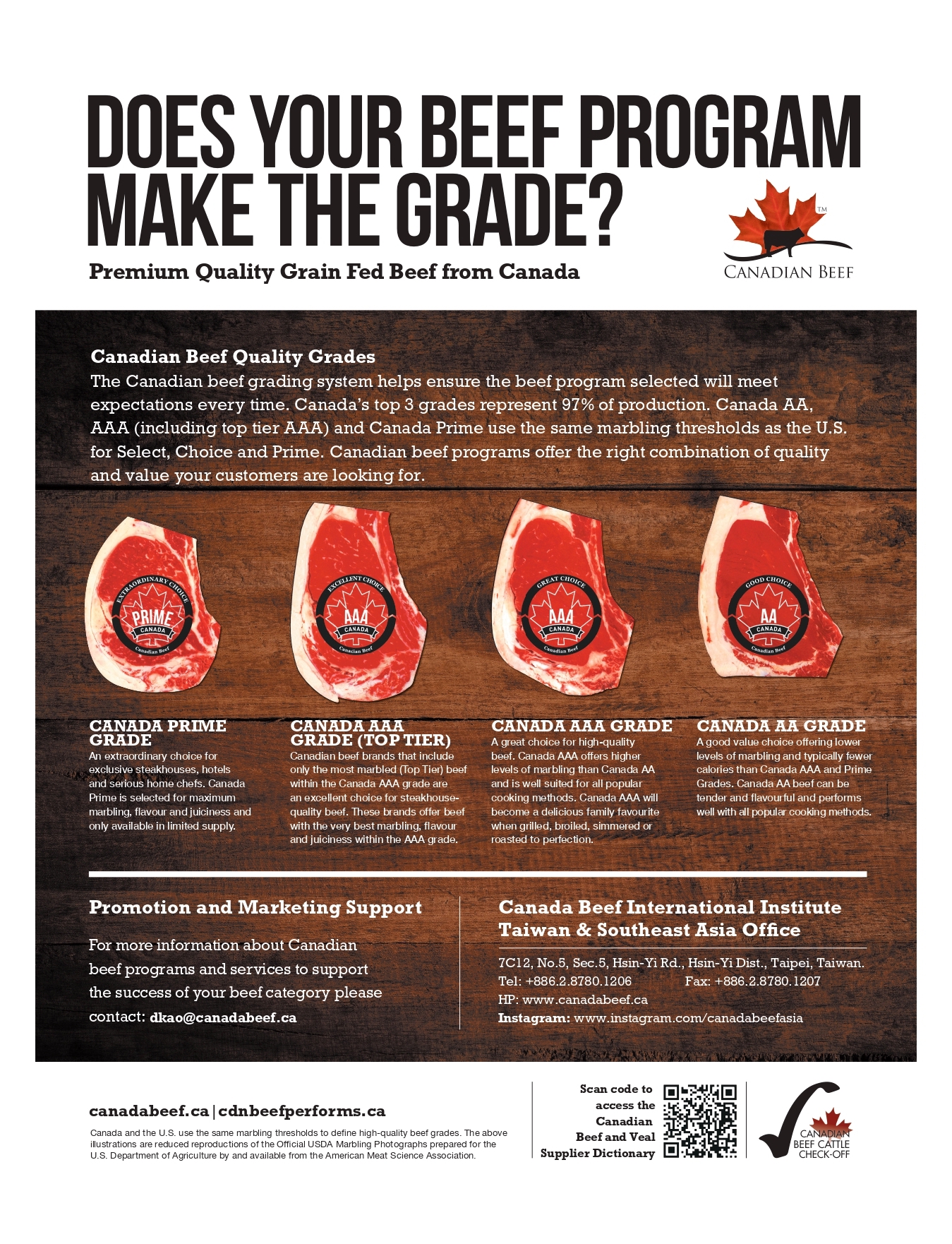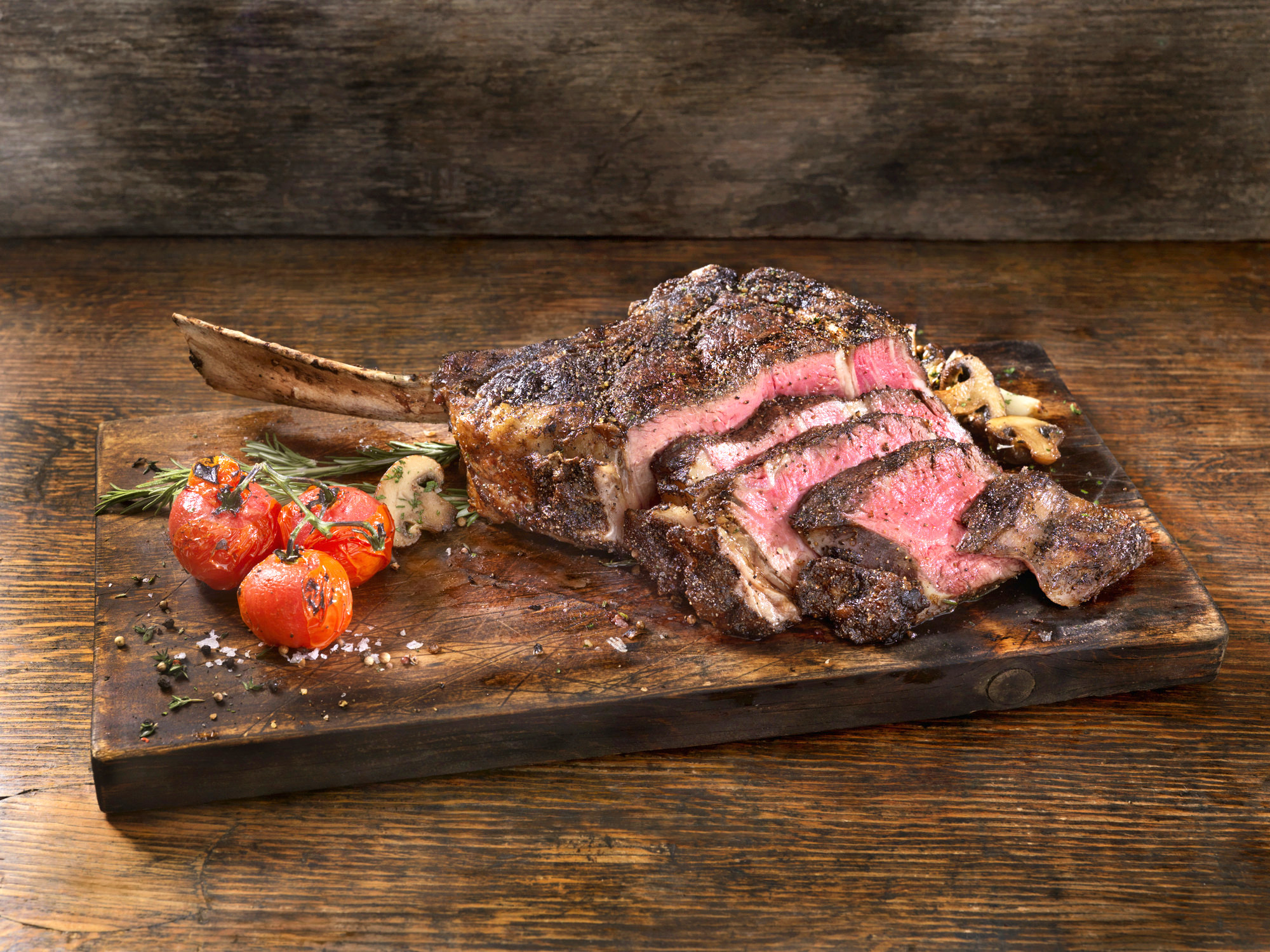Judging by its delicious flavor, tenderness, and juiciness, Canadian beef undoubtedly ranks as one of the best in the global meat industry.
Just as the second largest country in the world prides itself on a strict adherence to animal health, food safety, grading standards, and beef quality—key foundations of the Canadian beef industry—so too is its commitment to cattle welfare and environmentally sustainable practices.
Here, we outline the reasons on what makes Canadian beef a cut above the rest.
Grain-fed
Canada is one of the largest grain producers in the world. Feeding barley, corn, and wheat during the final months of production contributes to well marbled, firm, and textured beef with fine white colored fat.
It also contributes to the distinctive taste, texture, and aroma of Canadian beef. Canadian feeding practices enable more than 85 percent of beef cattle to reach optimum market weights between 16 to 24 months.
Breeding
Canada is recognized as a world leader in beef cattle production. Canadian producers utilize a selection of Bos taurus breeds of cattle, which are perfectly suited to thrive in cooler climates. Bos taurus breeds like Angus consistently produce well-marbled, high-yield, and flavorful beef that are always in high demand around the world.

Grading system
Canada is a global leader in beef grading to satisfy consumer demand for consistency and predictability in the beef they purchase. Canadian high quality grades are selected for youthful maturity, marbling, meat color, texture, fat color, and fat cover standards.
Its top three grades represent 97 percent of production: Canada AA, AAA, and Canada Prime use the same marbling thresholds as the United States for Select, Choice, and Prime.

Animal health
Canada maintains a strong commitment to the control and elimination of serious animal diseases through the National Animal Health Program. The program requires ongoing surveillance and is supported by the Canadian Cattle Identification System. This means that all cattle must be identified with an approved ear tag, allowing their movements to be traced all the way back to their farm of origin.
Food safety
Canada’s food safety system for beef slaughter and fabrication is based on the internationally recognized Hazard Analysis Critical Control Points (HACCP) model. The focus of HACCP is the prevention of foodborne illness, which continues to be the most important priority of the Canadian beef industry.
Sustainability
Canada has abundant sources of fresh water and a vast land mass with wide-open grazing ranges and natural grasslands. Healthy and well cared for animals are the basis for excellent quality beef using fewer resources with a lower impact on the environment. Local laws protect soil and water quality and support environmental sustainable production practices.
Canadian beef is available for purchase from a number of Philippines importers and distributors or direct from Canadian suppliers. Contact Deana Kao [email protected] for more details.
For more information visit canadabeef.ca and cdnbeefperforms.ca
ADVT





